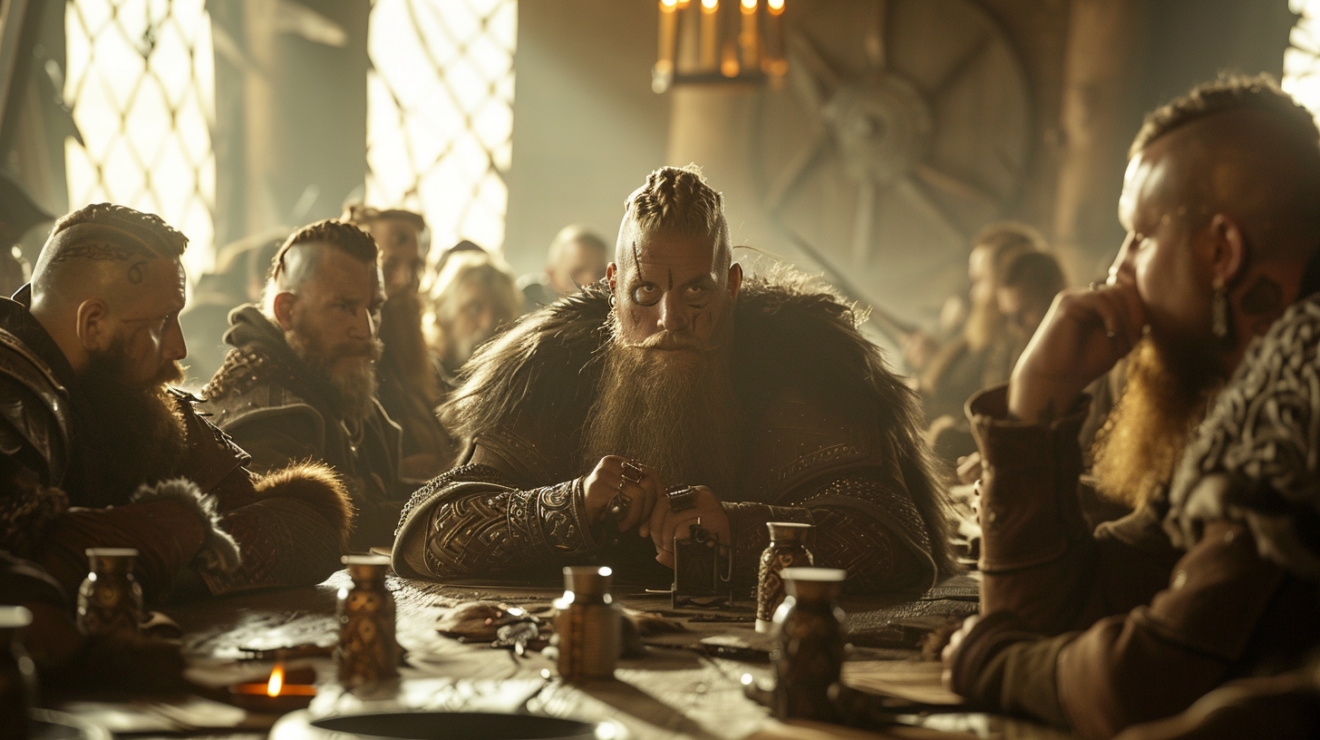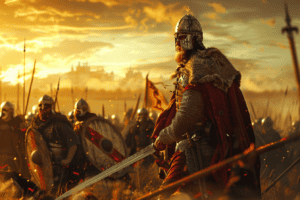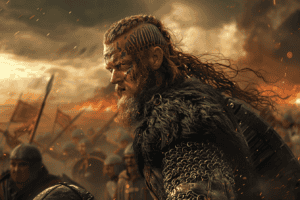The Viking ‘Thing’ system offers a unique perspective on early democratic practices, challenging conventional views of governance in the Dark Ages.
How did this assembly of free men influence decision-making processes and societal norms? What lessons can be drawn from the participatory nature of the Thing in understanding the evolution of democratic principles in medieval societies?
Evolution of Viking Governance

Evolving from decentralized local assemblies, Viking governance emphasized lawmaking and dispute resolution through the ‘Thing‘, shaping a society based on social ties rather than hierarchical structures. In Viking society, chieftains vied for followers and prestige within this decentralized governance structure. This competition among chieftains, without a centralized hierarchy, played an important role in shaping the evolution of governance in Viking communities.
Conflict resolution in Viking society was primarily achieved through the ‘Thing’, where disputes were settled and laws were established. This system of legal resolution not only maintained order but also promoted a sense of community and cooperation among individuals. The emphasis on the ‘Thing’ as a platform for justice highlights the importance Vikings placed on upholding laws and maintaining social harmony.
The Althing: Viking Democratic Assembly

The establishment of the Althing in 930 CE in Iceland marked a significant milestone in Viking governance, serving as a pivotal democratic assembly for all free men in the region. This assembly was where Viking Law, also known as Norse Law, was recited, disputes were settled, and important decisions were made. The Althing wasn’t only a legislative body but also a judicial one, with a designated law speaker responsible for memorizing and reciting the laws.
Chieftains and leaders from various regions gathered at the Althing to discuss laws, alliances, and conflicts, emphasizing the importance of regional assemblies in the Viking political system. The Althing provided a platform for social mobility, allowing individuals to voice their opinions and participate in the decision-making process regardless of their social status.
Chieftains in Viking Society

Chieftains in Viking society wielded local authority through their ability to gather followers, resolve disputes, and forge alliances, shaping the fabric of their communities. These local leaders played a pivotal role in maintaining order and upholding societal norms within the decentralized structure of Viking governance. Competing for followers and prestige, chieftains arbitrated conflicts and made decisions that impacted their communities. Unlike a centralized system, where power is concentrated in one ruler, Viking chieftains operated within a framework that allowed for individual influence and decision-making.
Their temporary authority wasn’t based on a rigid hierarchy but on their capacity to garner support and navigate complex social dynamics. Chieftains were instrumental in shaping local laws and customs, influencing the direction of societal development. By resolving disputes and fostering alliances, these leaders contributed to the stability and cohesion of Viking society, showcasing the significance of their role in governance.
Decentralized Authority in Viking Governance

In Viking governance, local assemblies known as Things were essential in handling law, disputes, and decision-making, showcasing the decentralized nature of authority in the society. These Things were gatherings of free men who came together in small groups to discuss and decide on matters that affected their communities. Instead of a central authority figure dictating laws, the Vikings relied on these assemblies to create new laws and settle disputes. Chieftains in Viking society had significant influence, but their authority was temporary and based on support rather than a formal hierarchy.
The decentralized authority in Viking governance allowed for a more fluid power structure, with chieftains competing for followers and alliances. The establishment of the Althing in Iceland further solidified this decentralized system, providing a common assembly where legal matters could be resolved and reviewed. This emphasis on social relationships over formal structures enabled the Vikings to maintain a balance of power among chieftains and prevent the concentration of authority in the hands of a few.
Role of Consensus in Viking Politics

Consensus building played a pivotal role in Viking politics, shaping decision-making processes at local assemblies known as Things where free men gathered to resolve disputes and create laws. The participatory nature of the Viking Thing system allowed for discussions and negotiations among attendees to reach agreements. Decisions were made based on the input and agreement of all participants, highlighting collective responsibility in governance.
This emphasis on consensus guaranteed that laws and policies mirrored the community’s will rather than individual interests, fostering a sense of unity and shared purpose. Through consensus building, the Vikings were able to settle disputes effectively and maintain order within their society. The Old Norse tradition of consensus at the Thing contributed to the success and longevity of their governance system, allowing for a fair and inclusive decision-making process.
Women in Viking society also played essential roles in governance, and over time, they gained more power and influence in the political arena. Even King Harald Fairhair, a prominent figure in Viking history, operated within this consensus-driven system, showcasing its widespread acceptance and efficacy in Viking politics.










Add Comment